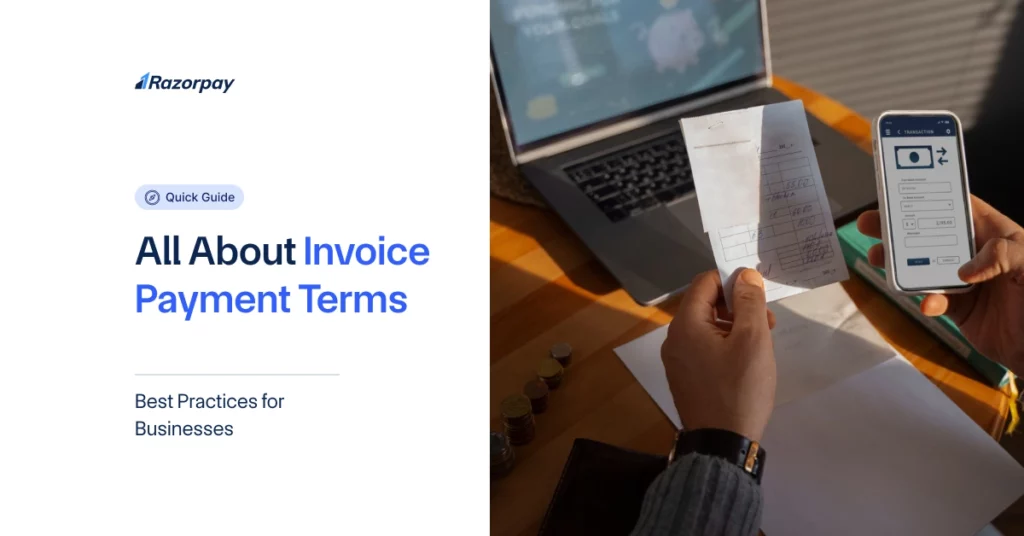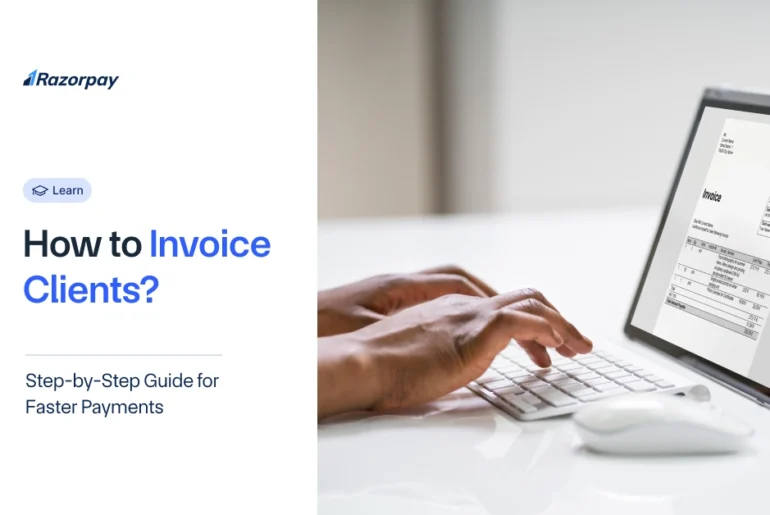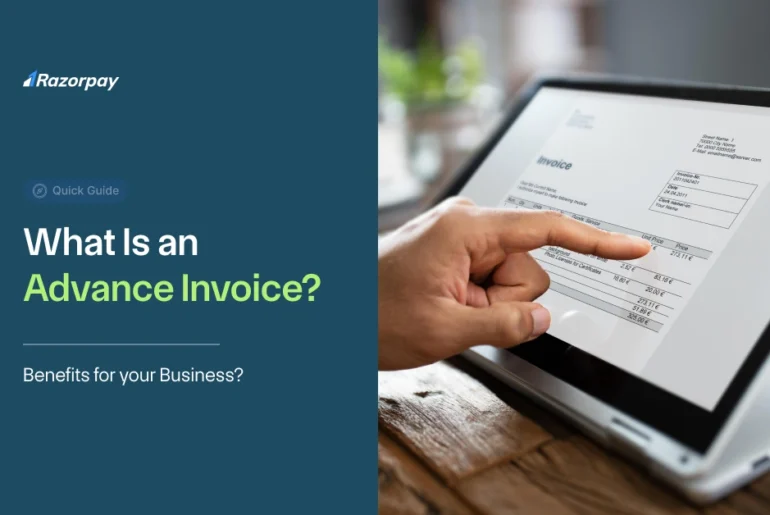As a business owner, understanding and implementing effective invoice payment terms is crucial for maintaining healthy cash flow and fostering strong customer relationships. Invoice payment terms outline the conditions under which a seller expects to receive payment for goods or services provided. In this article, we’ll explore the importance of clear payment terms, common practices, and best strategies for optimising your invoicing process.
Table of Contents
What Are Invoice Payment Terms?
Invoice payment terms are the conditions that specify when a business expects to receive payment from a client for goods or services provided. These terms are typically included on the invoice itself and outline the payment due date, any discounts for early payment, and the consequences of late payment. For GST compliance, include GSTIN, HSN/SAC codes, and a tax breakup (CGST, SGST, or IGST) to ensure accurate tax calculation and input tax credit claims as per Indian GST regulations.
Why Are Invoice Payment Terms Important?
Clearly defined invoice payment terms are vital in ensuring smooth business operations and maintaining financial stability. Here’s why they matter:
1. Cash Flow Management:
By specifying when payments are due, businesses can better forecast and manage their cash inflows. This predictability helps in meeting operational expenses, paying suppliers, and investing in growth opportunities.
2. Legal Clarity:
Explicitly stating payment terms is a legally binding agreement between the buyer and seller. It helps avoid confusion, disputes, and potential legal issues.
3. Relationship Building:
Transparent and reasonable payment terms demonstrate professionalism and foster customer trust. It shows that you value their business and are committed to maintaining a mutually beneficial partnership.
Common Invoice Payment Terms You Should Know
Familiarising yourself with standard invoice payment terms is essential for making informed decisions. Here are some frequently used terms:
|
Term |
Meaning |
|---|---|
|
Net 30 |
Payment is due 30 days after the invoice date |
|
EOM |
Payment is due by the end of the month |
|
COD |
Cash on delivery |
|
CIA |
Cash in advance |
|
2/10 Net 30 |
2% discount if paid within 10 days; otherwise, the full amount due in 30 days |
|
PDC (Post-Dated Cheque) |
Payment is made via a cheque dated for future clearance. |
|
UPI (Unified Payments Interface) |
Digital payment via UPI apps such as Google Pay, PhonePe, or Paytm. |
|
MSME Act |
Payments to Micro and Small Enterprises must be made within 45 days from the invoice date as per the MSME Act, 2006. |
Understanding these terms allows you to select the most suitable option based on your industry norms, business needs, and customer relationships.
Key Invoice Terms and Acronyms
To navigate the world of invoicing effectively, it’s crucial to grasp the meaning of common terms and acronyms:
1. Invoice:
A detailed bill listing goods or services provided, along with the total amount due and payment terms
2. Due Date:
The deadline by which payment must be received
3. Net:
The number of days within which payment must be made (e.g., Net 30)
4. Discount Terms:
Incentives offered for early payment (e.g., 2/10 Net 30)
5. Late Fee:
A penalty charged for payments made after the due date
Familiarising yourself with these terms ensures clarity in communication and helps you interpret invoice terms accurately.
Benefits of Invoice Payment Terms
Implementing well-defined invoice payment terms offers a range of benefits for your business:
1. Clarity & Transparency:
Clear terms eliminate ambiguity and set expectations straight from the start, reducing the likelihood of misunderstandings or disputes.
2. Better Cash Flow Management:
Predictable payment schedules enable accurate cash flow forecasting, helping you plan for expenses, investments, and growth.
3. Enhanced Financial Stability:
Timely payments contribute to a healthier financial position, allowing you to meet obligations and weather unexpected challenges.
4. Stronger Customer Relationships:
Transparent terms build trust and foster long-term partnerships with clients who appreciate your professionalism.
5. Fewer Disputes & Delays:
Well-defined terms minimise the risk of late payments, bounced checks, or disagreements that can strain business relationships.
By leveraging the power of clear payment terms on invoices, you can streamline your financial processes and set your business up for success.
Considerations Before Setting Payment Terms
Before establishing your invoice payment terms, consider the following factors:
1. Assess Your Cash Flow:
Evaluate your business’s cash flow needs to determine how long you can comfortably wait for payments. Strike a balance between offering attractive terms to customers and maintaining sufficient liquidity.
2. Industry Norms:
Research the standard payment terms in your industry to ensure your terms align with market expectations. Deviating too far from the norm may put you at a competitive disadvantage.
3. Customer Relationships:
Consider the nature and strength of your customer relationships. Long-standing, reliable clients may warrant more flexible terms compared to new or high-risk customers.
4. Invoice Value:
The total amount of the invoice can influence the payment terms you set. Higher-value invoices may justify longer payment periods to accommodate customers’ cash flow needs.
By carefully evaluating these factors, you can craft payment terms that suit your business’s unique circumstances and goals.
Tips for Writing Clear Invoice Payment Terms
To ensure your invoice payment terms are clear and effective, follow these best practices:
1. Be Clear & Specific:
Use straightforward language and specify the exact payment due date rather than vague terms like “Net 30.” Example: “Payment due by August 15, 2023.
2. Use Simple Language:
Avoid jargon or complex legal terminology that may confuse customers. Stick to plain, easily understandable language.
3. Set Clear Expectations:
Clearly state the consequences of late payments, such as interest charges or penalties. Be upfront about your policies to avoid surprises.
4. Offer Early Payment Discounts:
Consider incentivising prompt payments by offering discounts for early settlement. This can improve cash flow and build goodwill with customers.
5. Define Late Payment Consequences:
Clearly outline the ramifications of overdue payments, such as interest accrual or legal action. Be firm but professional in your approach.
6. Specify Payment Methods:
List the acceptable payment methods, such as bank transfers, credit cards, or checks. Provide clear instructions on how to make payments.
7. Allow Flexibility Where Possible:
Be open to negotiating payment terms with long-standing, reliable customers. Flexibility can strengthen relationships and foster loyalty.
By following these tips, you can craft invoice payment terms that are clear, concise, and effective in promoting timely payments.
Example of Invoice Payment Terms
To illustrate how clear payment terms can be incorporated into an invoice, here’s an example of an invoice with clear payment terms:
ABC Solutions Pvt. Ltd.
GSTIN: 27AAEPC1234L1Z1
Address: 123 Business Street, Mumbai, Maharashtra – 400001
Email: accounts@abcsolutions.com
Phone: +91-9876543210
Invoice #: 789456
Invoice Date: 10th July 2025
Due Date: 9th August 2025 (Net 30)
Bill To:
XYZ Pvt. Ltd.
456 Corporate Avenue, Bengaluru, Karnataka – 560001
GSTIN: 29AAEPX5678M1Z2
|
Item |
Description |
HNS/SAC Code |
Amount |
| 1 |
Website Development |
998314 | ₹85,000 |
| 2 |
Logo Design |
998391 | ₹40,000 |
| 3 |
Content Writing |
998431 | ₹60,000 |
Subtotal: ₹1,85,000
GST @ 18%: ₹33,300
Total Amount: ₹2,18,300
Payment Terms:
-
Net 30: Payment is due within 30 days from the invoice date.
-
2% discount if paid within 10 days (2/10 Net 30).
-
Late Payment Interest: 1.5% per month on overdue amounts.
-
As per MSME Act, payment must be made within 45 days for eligible small businesses.
Bank & Payment Details:
-
Bank Name: HDFC Bank
-
Account Name: ABC Solutions Pvt. Ltd.
-
Account Number: 0123456789
-
IFSC Code: HDFC0001234
-
UPI ID: abcsolutions@hdfcbank
Payment can be made via NEFT/RTGS, UPI (Google Pay, PhonePe, Paytm), or cheque.
This invoice format ensures GST compliance, provides clear payment terms, and offers multiple payment options for ease of transaction.
Frequently Asked Questions (FAQs)
1. What is a 30-day invoice payment term?
A 30-day invoice payment term, also known as “Net 30,” means that payment is due within 30 days of the invoice date. This is a common payment term used across various industries.
2. What happens if I miss the payment deadline?
If you fail to make payment by the specified due date, you may incur late payment fees or interest charges as outlined in the invoice terms. Late payments can also strain your relationship with the supplier and impact your credit score.
3. Can payment terms be negotiated?
Yes, payment terms can often be negotiated, especially if you have a long-standing relationship with the supplier or are making a large purchase. It’s always worth discussing payment options to find a mutually agreeable arrangement.
4. What are the consequences of not following agreed payment terms?
Failing to adhere to agreed payment terms can result in late fees, interest charges, and damage to your business relationship. In severe cases, it may lead to legal action or the termination of future business dealings.
5. Can I charge interest on late invoice payments?
Yes, you can charge interest on late payments as long as it is clearly stated in your invoice terms and complies with legal requirements. Be sure to communicate the interest rate and calculation method to your customers upfront.
6. Are digital invoices more effective than paper invoices?
Digital invoices offer several advantages over paper invoices, such as faster delivery, easier tracking, and reduced administrative costs. They also facilitate faster payment processing and help streamline your invoice processing workflow.



